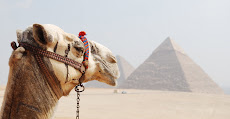The image is indelible. A roadside bear, balanced on its hind legs, eye level with a man, holding a rope in one paw, the other paw postured in a forlorn waive, swaying to and fro in a freakish waltz-like two-step. The sight through the bus window haunts you as you pass by, yet somehow, unbelievably, the bear eventually becomes one more page in the India catalogue of splendid horrors. While in Jaipur this week, I referenced this catalogue of memories from my first India trip in 2003, and was affronted with the recollection of this captive animal. Without the capacity to comprehend the meaning of the dancing bear, I hadn’t asked any questions or pointed any fingers six years ago. On this visit, however, accompanied by the female Steve Irwin, I thought some investigation into these animals might provide enlightenment, and hopefully help to perish the shocking image that has clung to my mind for over half a decade.
In the spring time, the female Sloth Bear gives birth in the jungle to a litter of four cubs. As a nocturnal creature, the new mother waits for darkness and then clambers through the night in search of food for her young. With four mouths to feed, and an appetite of her own, she is forced to leave her cubs unattended while she looks for honey, termites, or anything that might provide a meal. But she is not the only one on the hunt. This is prime season for the Kalander people of northern India. Dispersed in bands, the Kalanders find the bear, ambush and kill her, and then follow the cries of the cubs. The discovery of the four young bears is a financial boon for the village. The cubs will provide a solid source of income for a new generation of Kalander men, and they will allow the villagers to uphold a 400 year tradition.
The fate of the cub is intolerable. A burning metal rod will be thrust through its nose. A rope is strung through the fresh wound and bound to a primitive muzzle. The head gear is attached to a leash and the bear is tethered to a stake. His life is now limited to the world within the radius of his four foot rope. His canine teeth and each claw will be pried out with rusty tools. For the rest of his existence he will be taunted with music, and forced to dance on the side of the road. Passersby will gawk and snap photos, and toss scraps of change to his captor, ensuring this cruel cycle will make yet another turn.
It is easy to make villains of the Kalander people. Yet this is not completely fair. The bears are a way of life to these villagers. In many ways the bears are all they know. This is a centuries old tradition, a practice that has been handed down from father to son for countless generations. To break the cycle would take years of effort, endless planning, and the initiative and foresight to introduce a new culture to an ancient group of people. This would be impossible. Yet after a week in India, having not seen a single roped bear, it seems to have been accomplished.
The name of the organization is Wildlife SOS. They have established four rehabilitation centers across India for traumatized Sloth Bears. Since 2002, they have managed to work with the Kalander people for the surrender of over 500 bears. Jeannie and I paid a visit to the center in Agra, and had an opportunity to meet some of the animals. Their enclosures are fantastic and the level of care is incredible. Their noses are allowed to heal, they are able to roam large areas, and they even become socialized with other bears. But even more impressive than the treatment of the rescued bears, is what the organization does for the villagers. Those who surrender a bear are provided with a check for 50,000 rupees. This money provides a Kalander man the capital to create a new source of income. The organization then trains the men and their families in textiles, jewelry making, and other crafts that can be sold. They even subsidize group weddings and help with large expenditures while the villagers get on their feet.
Wildlife SOS estimates that only 60 bears still remain captured in India. They believe by next summer the last bear will be surrendered and the practice of dancing bears will be completely eradicated. This is such an admirable organization and they certainly provided a better image of the bear to stow away in my catalogue of memories.

























No comments:
Post a Comment